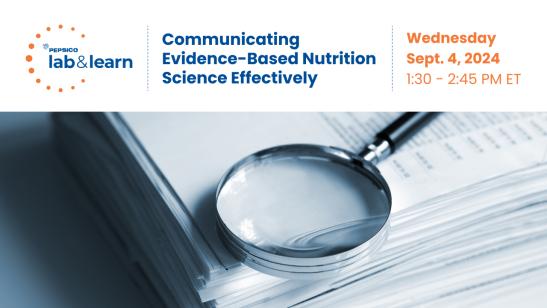Communicating Evidence-Based Nutrition Science Effectively
Description: Nutrition research is becoming increasingly difficult for the general public to navigate. Healthcare professionals are ideally positioned to translate scientific publications and inspire consumer trust through credible science communication. With the guidance of our expert speakers, this webinar aims to arm healthcare professionals with the right tools to critically review scientific publications and to accurately present research to the public in the proper context. Participants will then be guided through real-world examples of how research has been translated into media headlines; credible and not, and the impact misinformation can have on the public. This webinar will feature guidance from a recent report from the International Food Information Council, highlighting methods for interpreting food and health science. As part of this session, you may use the How to Communicate Nutrition Science Effectively handout to understand, interpret and translate nutrition science for communications with the general public.
Moderator:
Milton Stokes, PhD, MPH, RD, FAND
Senior Director, Food & Nutrition, International Food Information Council
Presenters:
Andrew Brown, PhD, FTOS
Associate Professor, Department of Biostatistics, University of Arkansas for Medical Sciences
Regan Jones, RD, ACSM-CPT
Registered Dietitian
Funding from non-CPE revenue for CPE planning, development, review, and / or presentation has been provided by PepsiCo. The speakers received compensation from PepsiCo for their participation. Any opinions or scientific interpretations expressed in this presentation are those of the speakers and do not necessarily reflect the position or policy of PepsiCo, Inc.
Communicating Evidence-Based Nutrition Science Effectively awards 1.25 CPEUs in accordance with the Commission on Dietetic Registration's CPEU Prior Approval Program. CPEUs for this activity expire on August 13, 2027.
- Review scientific publications to assess credibility and identify strengths/weaknesses.
- Rank research findings by strength based on evidence hierarchy and guide communication.
- Expand understanding of the scientific process and its translation into recommendations.
- Interpret data in the context of existing literature to present research relevance clearly.
